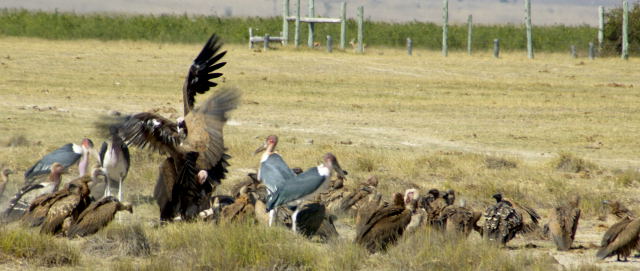Ecology Home
Syllabus/ Course Information
Lab information & hand-outs
Websites of Interest
Professors
Cedar Crest College Home Page
Bio 234 Ecology

Ecology is the study of the
interactions between an organism and the environment and how these
interactions influence the abundance and distribution of the organisms.
Lecture will emphasize the underlying theories of ecology in an
evolutionary context. Students will be challenged to understand and
apply these theories in analyzing the interactions that determine the
distribution and abundance of organisms. Lecture and integration of the
laboratory is aimed at a collective understanding and practical
application of these fundamental principles of ecology.
The study of ecology encompasses subdisciplines that are organized within a hierarchy of organization: individuals (behavioral), populations, communities, ecosystems, and landscapes. While the subdisciplines/hierarchical levels of ecology endeavor to answer questions at different spatial and temporal scales using different experimental approaches and methodologies, they are all interrelated and each level informs on the level above and below it.
Ecology is a science;
therefore, ecologists use the scientific method to understand the
factors that affect the distribution and abundance of species. A very
wise geneticist once stated that “nothing makes sense in biology except
in the light of evolution.” This is especially so for ecology because
of the very close relationship between ecology and evolution;
intraspecific competition (part of theme #2) is the primary mechanism
of evolution by natural selection.
Thus, this course has been
organized around six themes:
1. THE SCIENCE OF ECOLOGY: Application
of the scientific method to the study of ecology,
2. THE ECOLOGY OF EVOLUTION: Natural selection, micro- and macro evolution,
3. HISTORY AND THE ECOLOGICAL NICHE: What affects the distribution and abundance of species (population and ecosystem ecology),
4. POPULATION DYNAMICS: Demography, Population Abundance, and Metapopulations (population and community ecology),
5. INTERSPECIFIC INTERACTIONS: The Structure and Organization of Communities (behavioral and community ecology),
6. AN ECOLOGIST’S MANTRA: “Energy flows, nutrients cycle” (ecosystem ecology).
2. THE ECOLOGY OF EVOLUTION: Natural selection, micro- and macro evolution,
3. HISTORY AND THE ECOLOGICAL NICHE: What affects the distribution and abundance of species (population and ecosystem ecology),
4. POPULATION DYNAMICS: Demography, Population Abundance, and Metapopulations (population and community ecology),
5. INTERSPECIFIC INTERACTIONS: The Structure and Organization of Communities (behavioral and community ecology),
6. AN ECOLOGIST’S MANTRA: “Energy flows, nutrients cycle” (ecosystem ecology).